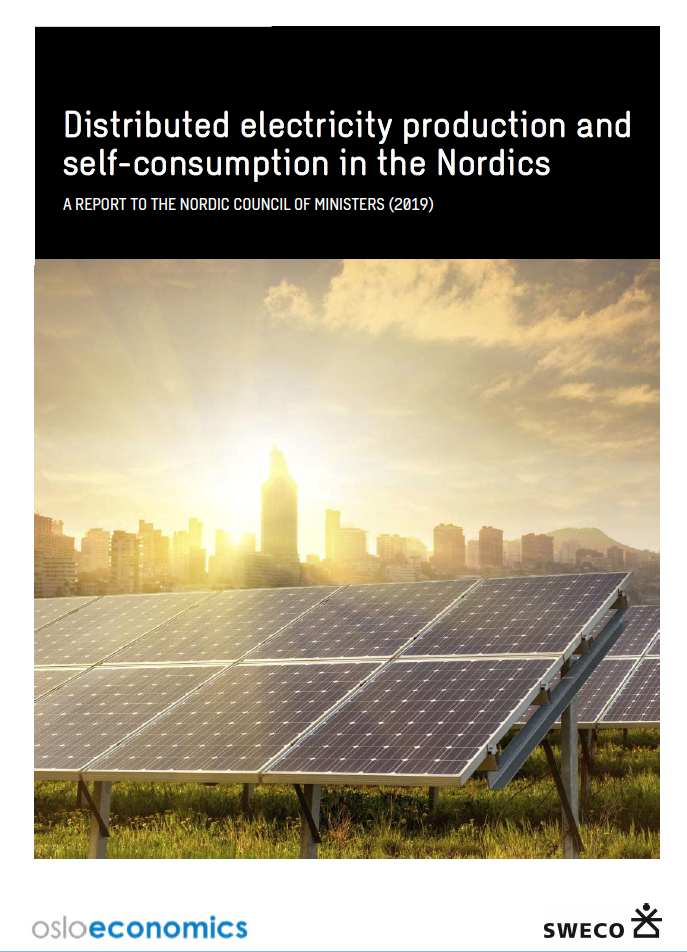
New report: Distributed electricity production and self-consumption in the Nordics
The report estimates that the volume of renewable electricity produced in the Nordics that can be used for self-consumption was 5 TWh in 2017. Total installed capacity (all installations below…
The report estimates that the volume of renewable electricity produced in the Nordics that can be used for self-consumption was 5 TWh in 2017. Total installed capacity (all installations below 1 MW) increased from 3030 MW in 2005 to 4050 MW in 2017. Denmark had – due to attractive incentives up to 2013 – strong growth in installed photovoltaic panels. In Finland, the self-production of electricity from photovoltaic panels doubled year-by-year between 2013 and 2017.
The report – Nordic distributed electricity production and self- consumption– was undertaken by SWECO and Oslo Economics on behalf of The Nordic Working Group for Renewable Energy (AGFE). It provides an overview of the development of distributed electricity production and self-consumption in the Nordics and how it might evolve in the future. It identifies national and/or common Nordic challenges or perceived barriers to distributed generation and self-consumption of electricity.
Key findings:
- There are few – if any – barriers preventing the development of distributed electricity production in the Nordics. Self-production and consumption of electricity in the Nordics are not faced with any discriminatory measures or obstacles.
- All Nordic countries have regulatory frameworks enabling the development of self-production and consumption of electricity in relation to centralised electricity production and consumption.
- A comprehensive regulatory framework with multiple types of instruments, exemptions and incentive structures for self-production and consumption of electricity results in a more complicated system increasing transaction costs.
The Nordic Working Group for Renewable Energy (AGFE) was established by the Nordic Council of Ministers and is coordinating cooperation on policy development among the five Nordic countries in the field of renewable energy.
